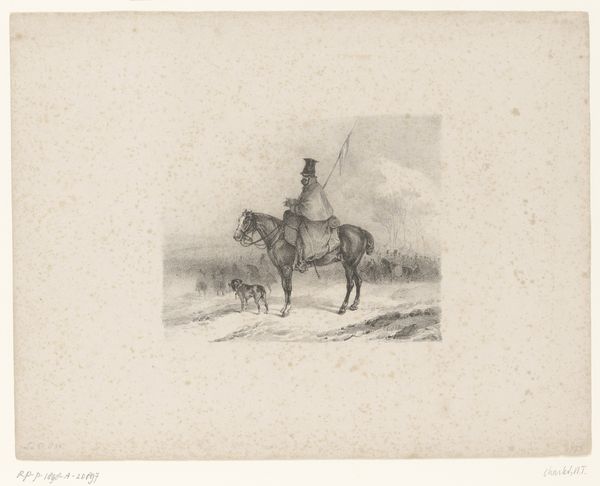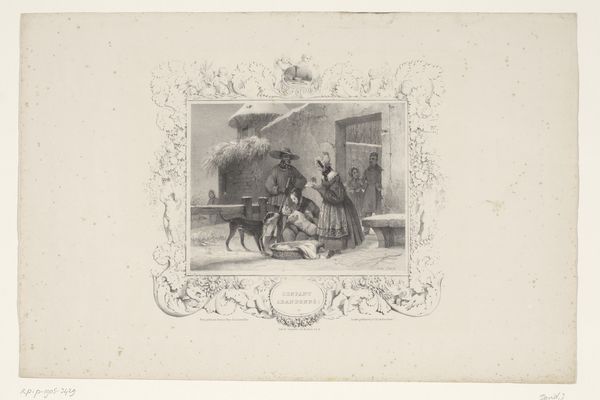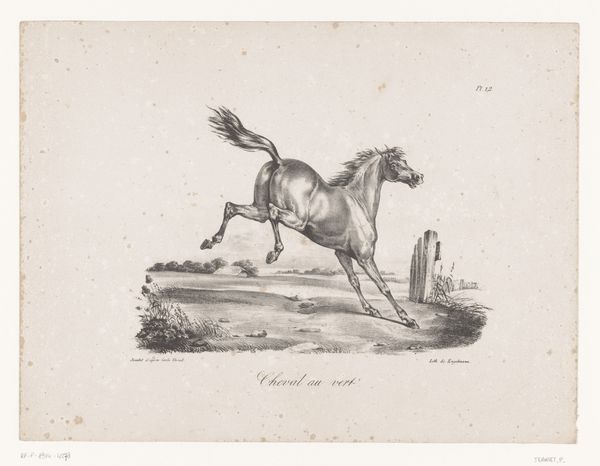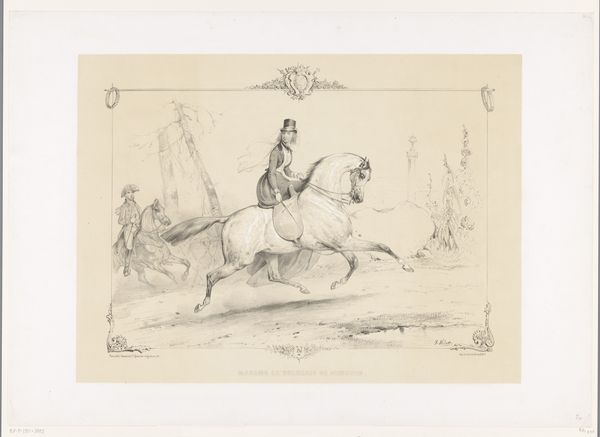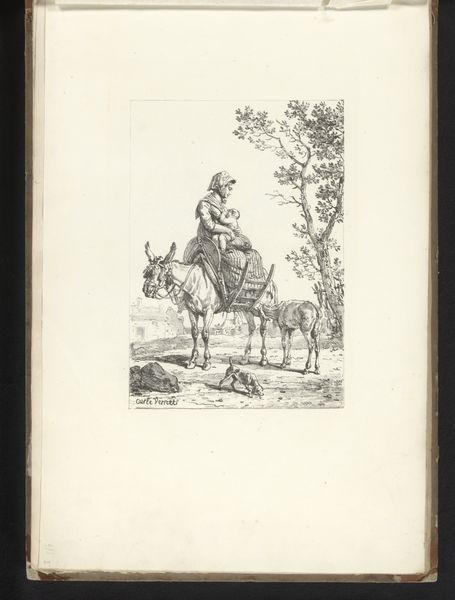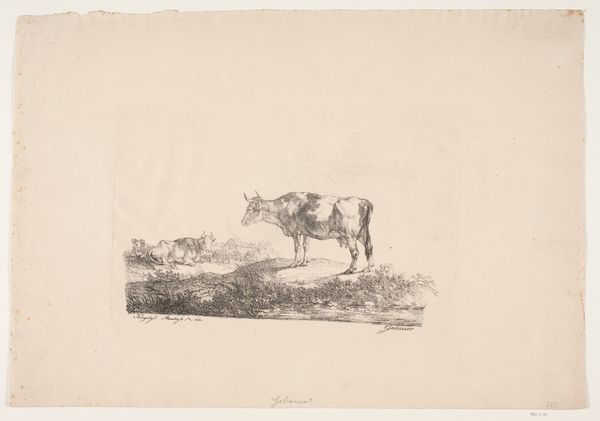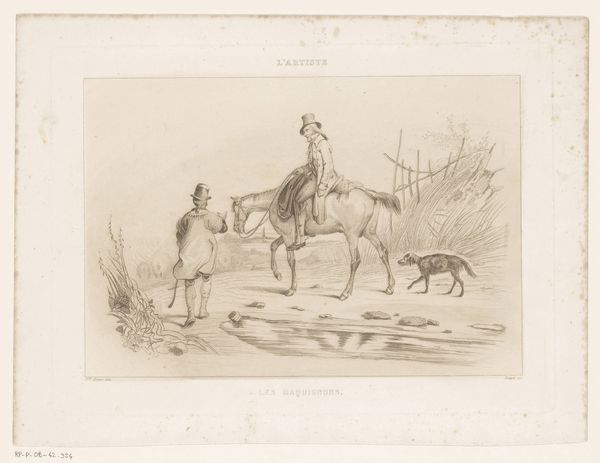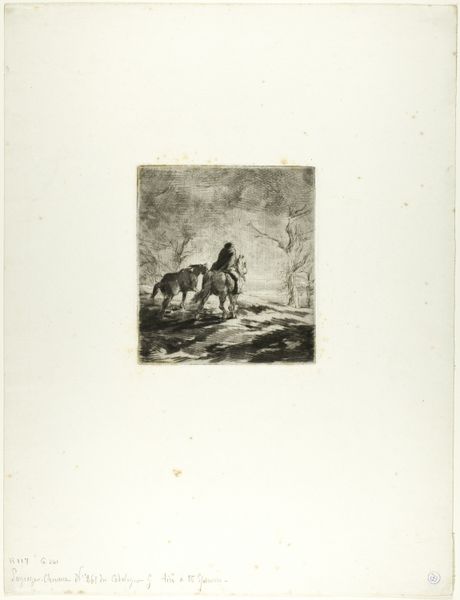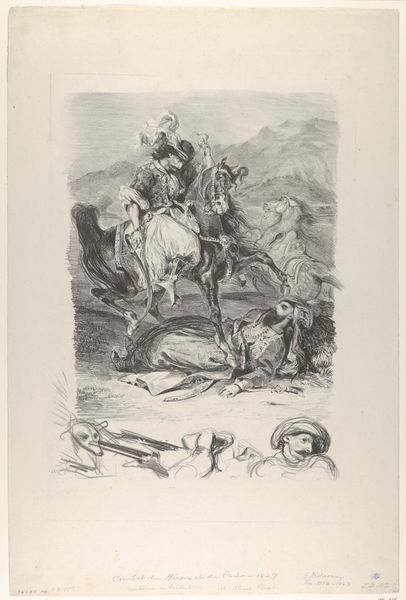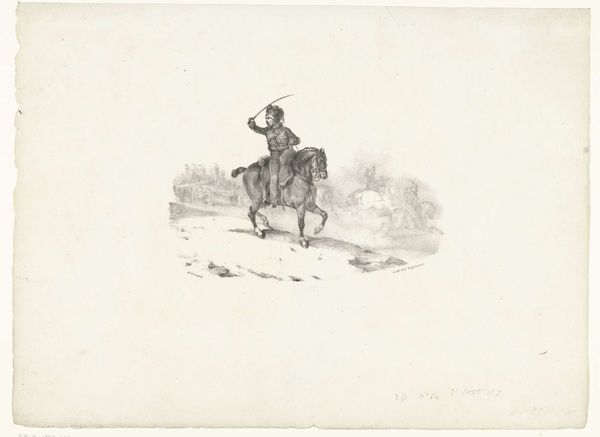
drawing, print, engraving
#
portrait
#
drawing
# print
#
landscape
#
romanticism
#
orientalism
#
horse
#
engraving
Dimensions: height 172 mm, width 279 mm
Copyright: Rijks Museum: Open Domain
Curator: Ah, this engraving. It's called "Zittende man in Ottomaanse kledij met paard," or "Seated Man in Ottoman Clothing with Horse," created sometime between 1820 and 1851 by Karl Loeillot-Hartwig. What's your first impression? Editor: Utter stillness. It's a very delicate rendering; the softness of the lines suggests a calm observation of posture, clothing, the patient companionship of the man and his horse, like time held its breath for a shared repose in the vast emptiness that the artist implies. I almost hear whispers. Curator: Whispers of the Orientalist fantasies popular during that time, I imagine. The man's elaborate turban and robes immediately place him within that tradition. Though, the landscape isn’t overtly romanticized; the focus seems more on the everyday interaction between man and animal. I wonder, was Loeillot-Hartwig drawn to the exotic or attempting a more naturalistic portrayal? Editor: I wonder if that even matters given that, as an engraving, there's a certain amount of built-in mediation? I mean, someone had to translate the original drawing to a matrix – maybe copper or steel in this case? And then, the artist, or perhaps a workshop of artisans, prints many identical impressions on paper. These printed artworks allowed such images of the Ottoman Empire to be dispersed across Europe. What are the consequences, material and otherwise, of depicting foreign figures and scenes, packaging them as flat, reproducible objects and moving them around the world? Curator: A valid point! It highlights how readily "otherness" could be packaged and consumed. Perhaps it provided a window for cultural exchange, but more likely, it solidified existing biases, no? It’s a simple scene, though, isn’t it? A man at rest. His connection to the horse feels very...gentle. You notice that the horse kind of echoes the seated man’s shape and position. Editor: The stillness in the landscape allows this sort of intimacy to become its own landscape of feeling. Perhaps it shows a reverence for work. These engravings, multiples as you said, could bring art to people who weren’t necessarily art consumers. Art as daily life—I appreciate that. Curator: It does give pause, doesn't it, to consider the different strata and circumstances through which such imagery could spread. There’s something wonderfully democratic about the nature of a widely reproducible print—for both the artist and the viewer. Editor: Ultimately, yes. And this feels particularly true for pieces where their main agenda isn’t a display of skill but instead shows how images and cultural perceptions are material things, as crafted and considered as any sculpture or finely rendered painting.
Comments
No comments
Be the first to comment and join the conversation on the ultimate creative platform.
